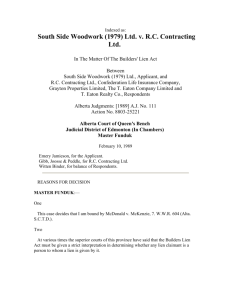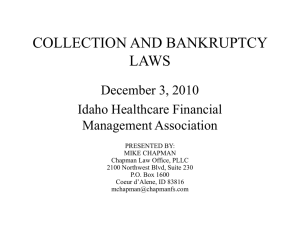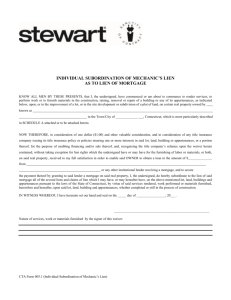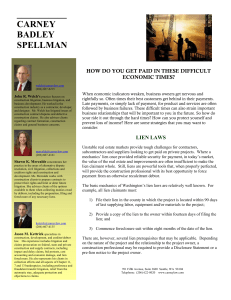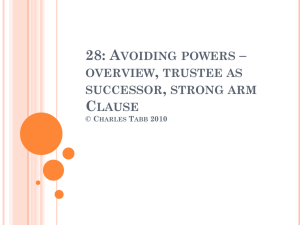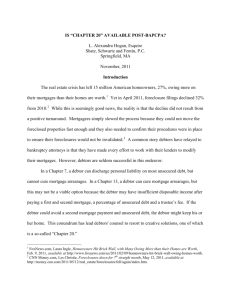Eliminating a judgment lien under Bankruptcy Code Section 522(f)
advertisement
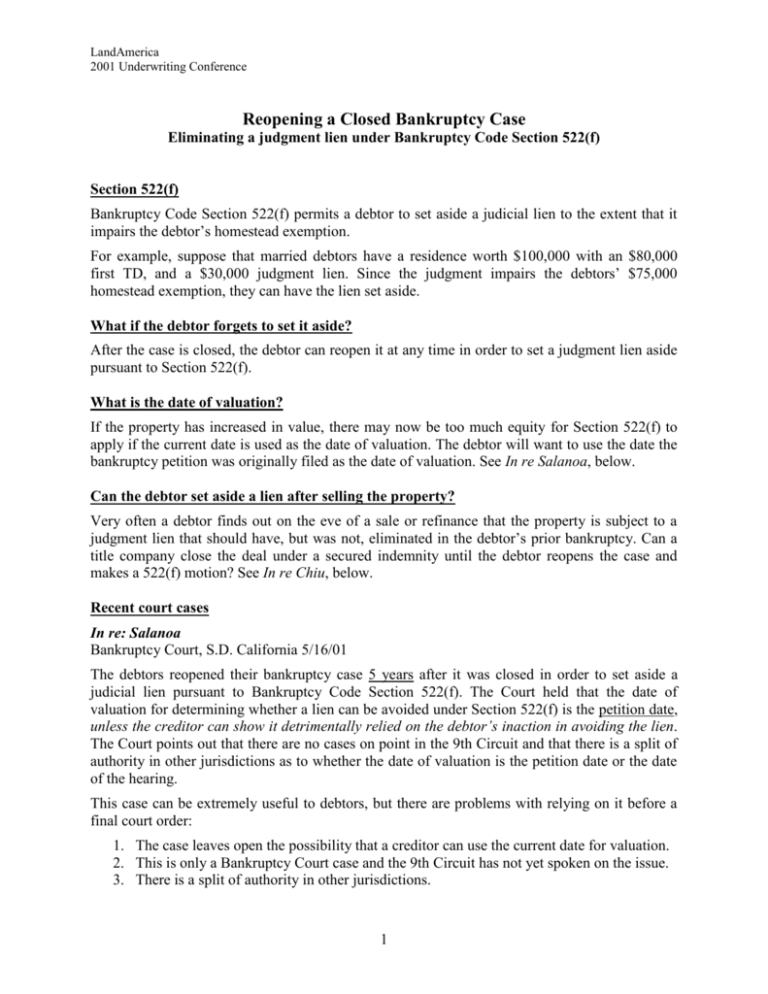
LandAmerica 2001 Underwriting Conference Reopening a Closed Bankruptcy Case Eliminating a judgment lien under Bankruptcy Code Section 522(f) Section 522(f) Bankruptcy Code Section 522(f) permits a debtor to set aside a judicial lien to the extent that it impairs the debtor’s homestead exemption. For example, suppose that married debtors have a residence worth $100,000 with an $80,000 first TD, and a $30,000 judgment lien. Since the judgment impairs the debtors’ $75,000 homestead exemption, they can have the lien set aside. What if the debtor forgets to set it aside? After the case is closed, the debtor can reopen it at any time in order to set a judgment lien aside pursuant to Section 522(f). What is the date of valuation? If the property has increased in value, there may now be too much equity for Section 522(f) to apply if the current date is used as the date of valuation. The debtor will want to use the date the bankruptcy petition was originally filed as the date of valuation. See In re Salanoa, below. Can the debtor set aside a lien after selling the property? Very often a debtor finds out on the eve of a sale or refinance that the property is subject to a judgment lien that should have, but was not, eliminated in the debtor’s prior bankruptcy. Can a title company close the deal under a secured indemnity until the debtor reopens the case and makes a 522(f) motion? See In re Chiu, below. Recent court cases In re: Salanoa Bankruptcy Court, S.D. California 5/16/01 The debtors reopened their bankruptcy case 5 years after it was closed in order to set aside a judicial lien pursuant to Bankruptcy Code Section 522(f). The Court held that the date of valuation for determining whether a lien can be avoided under Section 522(f) is the petition date, unless the creditor can show it detrimentally relied on the debtor’s inaction in avoiding the lien. The Court points out that there are no cases on point in the 9th Circuit and that there is a split of authority in other jurisdictions as to whether the date of valuation is the petition date or the date of the hearing. This case can be extremely useful to debtors, but there are problems with relying on it before a final court order: 1. The case leaves open the possibility that a creditor can use the current date for valuation. 2. This is only a Bankruptcy Court case and the 9th Circuit has not yet spoken on the issue. 3. There is a split of authority in other jurisdictions. 1 LandAmerica 2001 Underwriting Conference In re Chiu Bankruptcy Appellate Panel 9th Circuit 8/23/01 Debtors filed a Chapter 7 petition and claimed their residence as a homestead. They did not take any action to avoid a judgment lien. They obtained a discharge and the case closed in 1995. In 1999 the debtors sold their residence and sufficient proceeds were retained in escrow to cover the judgment lien. The debtors then filed motions to reopen their bankruptcy case and to avoid the lien under Bankruptcy Code Section 522(f). The Court held (1) the debtors had standing even though they no longer owned the property and (2) Section 522(f) allows the avoidance of a judicial lien after the debtor has sold the exempt property. The Court did not specifically discuss whether the valuation date is the date of the petition or the date of sale, but states that "the right to avoid a judicial lien must also be determined as of the petition date". Rules of Title Practice If a debtor has failed to set a lien aside under 522(f) and wants to do so after escrow closes, we should follow our ordinary secured indemnity procedures. Holding less than the full amount required by those procedures in reliance on In re Salanoa could be dangerous and should be done only with the approval of the Regional Legal Department. Don’t forget the 10-day bankruptcy appeal period. 2
